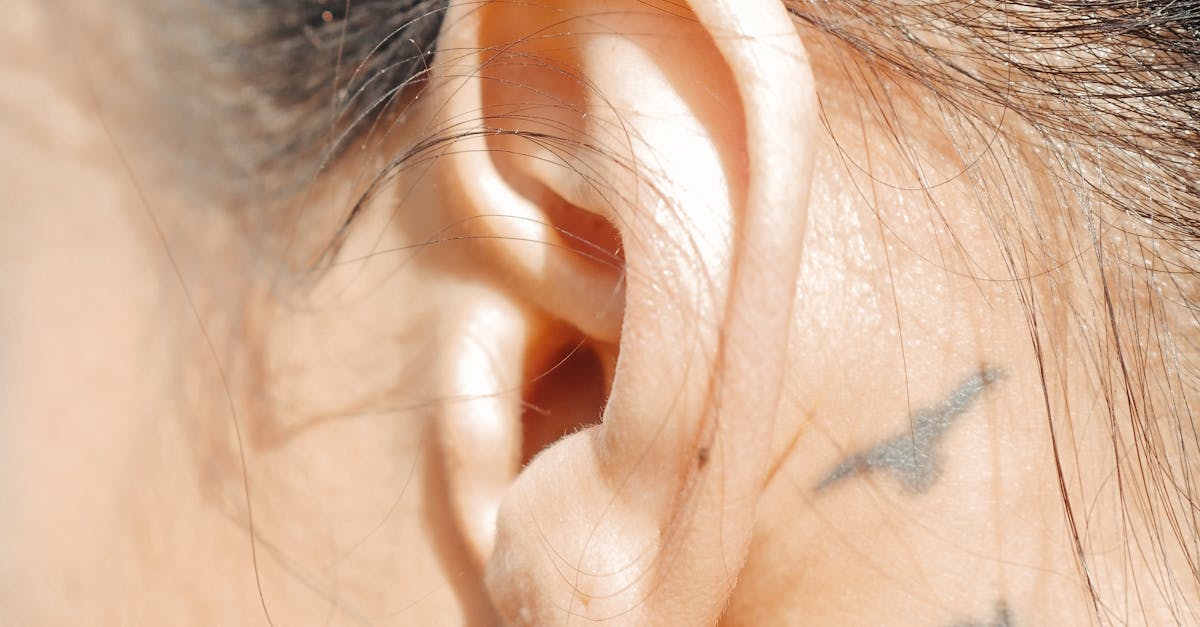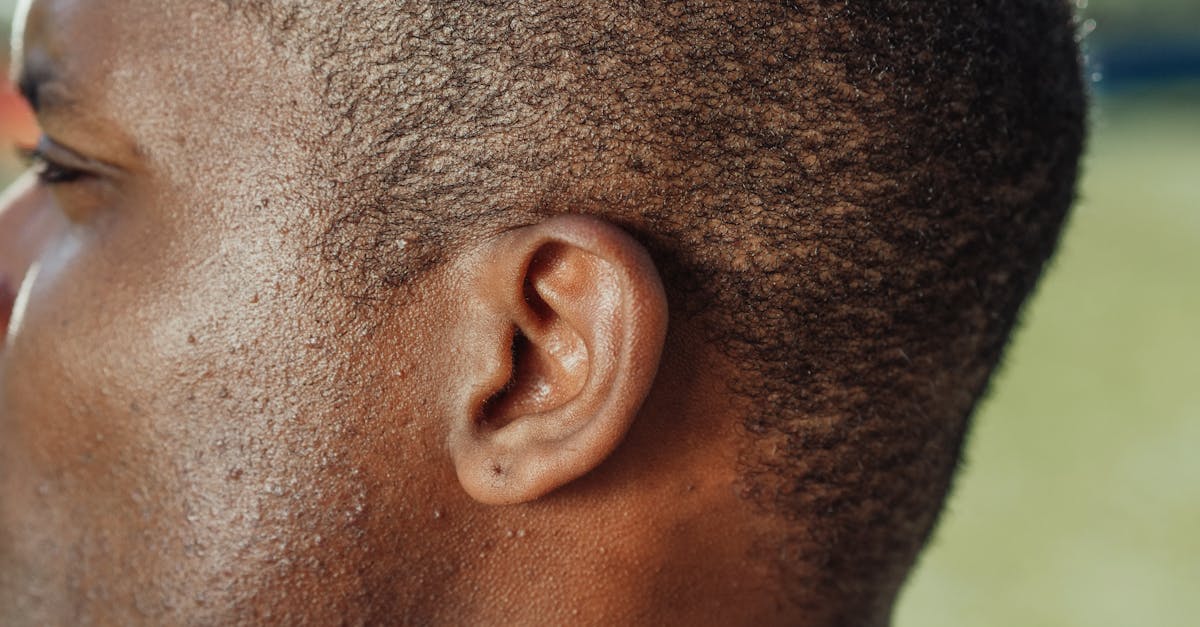Discover the Benefits of Modern Hearing Aids for Enhanced Hearing
Key Takeaways
- Summary of contemporary auditory devices and their functionalities
- Varieties of auditory devices and their unique features
- Explanation of the operational mechanics of auditory devices
- Innovations in auditory devices and their capabilities
- Advantages of electronic auditory devices and their impact
- Cost considerations and availability of auditory devices
- Frequent misunderstandings regarding auditory devices and their use
Overview of Modern Hearing Aids
Modern hearing aids have transformed the auditory experience for individuals with hearing loss, featuring advanced technologies that significantly enhance sound quality. Digital hearing aids now dominate the market, offering superior sound processing capabilities compared to their analogue predecessors. Extended-wear hearing aids allow for a more convenient user experience, while bone anchored hearing aids provide a unique solution for those with specific types of hearing impairment. These hearing devices are designed to accommodate various lifestyles and preferences, ensuring that users can find a model tailored to their needs. Please seek advice from an audiologist like Nantwich Hearing Centre. The rise of modern hearing aids signifies a pivotal shift in how people engage with the world of sound, bridging the gap between those with hearing challenges and their environments.
What Are Hearing Aids?
Modern Hearing Aids are sophisticated devices designed to assist individuals experiencing hearing loss or impairments. These aids amplify sound, making it easier for users to engage in conversations and enjoy their surroundings. Tailored to meet varying degrees of hearing loss, they are an essential tool for those seeking to improve their auditory experiences. Besides amplifying sounds, modern devices also offer features that aid in hearing protection, ensuring users can enjoy their environment safely.
The technology behind hearing aids has advanced significantly over the years, providing not just amplification but also improved sound quality and clarity. Users can choose from different types, including hearing implants for more severe cases of hearing impairment. With the rise of digital technology, modern hearing aids now come equipped with numerous features that enhance their functionality, making them more accessible to those with varying degrees of hearing loss.
Evolution of Hearing Aid Technology
The journey of hearing aid technology has seen remarkable advancements over the years. Early devices were rudimentary and often ineffective for individuals with profound hearing loss. Modern hearing aids employ sophisticated sound processing technology, allowing users to experience clearer audio and enhanced communication. Those undergoing a hearing test today can expect to be offered a wide range of devices tailored to specific needs, such as bone-anchored hearing aids for those with conductive hearing losses or customised aids for age-related hearing loss.
The development of digital signal processing has revolutionised the way sound is managed in hearing devices. Users can now benefit from features that improve their listening experience in various environments. Hearing tests are crucial for determining the most suitable aid, especially for individuals with partial loss of hearing. The integration of wireless technology has allowed modern hearing aids to connect seamlessly to smartphones and other devices, enhancing accessibility for all. In this evolving landscape, the focus remains on creating solutions that cater to diverse hearing needs.
Types of Hearing Aids
Modern Hearing Aids cater to a variety of hearing disabilities, offering solutions for both conductive and sensorineural hearing loss. These devices are designed to fit different areas of the ear, including options that rest behind the ear or sit discreetly in the outer ear. For individuals experiencing ear infections, specific modern aids can accommodate their needs without exacerbating conditions. Options such as low-profile and invisible hearing aids provide not only functionality but also a level of discretion for those concerned about aesthetics. Each type is tailored to ensure optimal performance and comfort, enhancing the auditory experience across all levels of hearing loss.
Digital Hearing Aids
Modern hearing aids employ digital technology to enhance sound quality and improve the listening experience for users. These sophisticated devices are capable of processing a range of sounds, making them beneficial for individuals with unilateral hearing loss. They can filter background noise effectively, allowing deaf people to focus on conversations without distraction. Some modern models can even connect to sound sources via hearing loops, enhancing audio clarity in various environments.
This category of devices includes in-the-ear and middle ear implants, each tailored to accommodate different levels of hearing impairment. For those who seek alternatives to traditional hearing aids, auditory brainstem implants present another option, especially for individuals with unique hearing needs. The versatility and advanced functionality of modern hearing aids ensure that users can find a suitable solution for their auditory challenges, promoting better communication and overall quality of life.
- Digital hearing aids enhance sound quality with advanced processing capabilities.
- They are effective in filtering out background noise to improve conversations.
- In-the-ear and middle ear implants provide tailored solutions for various hearing impairments.
- Auditory brainstem implants offer alternative options for individuals with differing hearing needs.
- Many modern hearing aids can connect to external sound sources for improved audio clarity.
- The versatility of these devices promotes better communication in various environments.
- Users can select from a range of models to match their specific auditory challenges.
BehindtheEar Hearing Aids
These devices are among the most popular types of Modern Hearing Aids. They sit comfortably behind the ear, providing support for individuals experiencing various levels of deafness. The design incorporates a small casing that houses the microphone, amplifier, and speaker, ensuring optimal sound quality. This positioning allows for effective sound transmission from the ear canal to the middle ear, enhancing hearing capabilities. Auditory stimulation is significantly improved, making it easier for users to engage in conversations and enjoy daily activities.
Behind-the-ear models can cater to a wide range of hearing loss severity, from mild to profound deafness. The connection with ear, nose, and throat specialists is vital for tailored fitting and programming of these devices. Each unit can be customised to suit individual auditory needs. They also offer various features, such as noise reduction and feedback cancellation, further elevating user experience. The integration of modern technology ensures that these devices remain discreet yet powerful.
LowProfile Hearing Aids
Low-profile hearing aids represent a significant advancement in the realm of modern hearing aids. Designed to be discreet, these devices cater to individuals with varying degrees of hearing loss, including those experiencing single-sided deafness. They are often custom-fitted and placed in the auditory canal, providing a comfortable and low-visibility solution. Research from the National Institute on Deafness and Other Communication Disorders highlights the importance of addressing hearing challenges, especially for users reliant on auditory nerve stimulation.
These in-the-ear (ITE) devices showcase the evolution of hearing aids today, integrating advanced technology to enhance sound quality. With features that allow for greater sound processing and customisation, new hearing aids aim to meet the diverse needs of users. As modern hearing aids become more accessible, they present a unique option for those seeking both efficacy and discretion in their auditory assistance devices.
Invisible Hearing Aids
A popular choice among individuals seeking discreet auditory assistance, certain hearing aids are designed to be virtually invisible while providing effective sound amplification. These modern hearing aids consist of advanced technology that allows them to fit comfortably within the ear canal. Unlike traditional models, these true hearing aids are less visible, making them a desirable option for those who may feel self-conscious about their hearing devices. Comparable hearing aids often offer similar features but lack the discreet design that many users prefer.
These comfortable hearing aids utilise sophisticated sound processing systems to enhance audio clarity without compromising aesthetic appeal. The innovative designs of modern hearing aids ensure that users can engage with their environment seamlessly. Different hearing aids cater to various levels of hearing loss, offering tailored solutions. As the demand for inconspicuous hearing aids grows, manufacturers continue to refine their products, making them an integral part of the modern hearing aids market.
CIC Hearing Aids
CIC hearing aids are designed to fit completely inside the ear canal, making them one of the most discreet options among modern hearing aids. Unlike traditional hearing aids, these custom hearing aids are moulded to the unique shape of an individual's ears, ensuring a snug and comfortable fit. Their small size often means they cannot accommodate all features available in larger devices, but advancements in technology have allowed for impressive functionalities typically associated with digital hearing aids. Hearing aids reviews frequently highlight their effectiveness in managing mild to moderately severe hearing loss.
These fitted hearing aids often appeal to users seeking a natural hearing experience without the visibility of conventional devices. Their design allows for minimal occlusion, which enhances the overall sound quality as the user's own voice is transmitted more naturally. While analogue hearing aids may still be in use, digital hearing aids have largely surpassed them in performance. Top hearing aids on the market now include an array of features that make CIC models an appealing choice for many who prioritise aesthetics alongside advanced hearing capabilities.
How Hearing Aids Work
Modern hearing aids utilise sophisticated sound processing mechanisms that significantly enhance the listening experience compared to old hearing aids. These powerful hearing aids are engineered to adapt to various sound environments, providing a level of clarity that normal hearing aids may struggle to achieve. Features in these quality hearing aids, such as noise reduction and feedback cancellation, ensure clean hearing aids that filter out background noise while amplifying essential sounds. Options like Bluetooth connectivity and customisable settings make ite hearing aids not only functional but also user-friendly. For those seeking small hearing aids, today's market offers numerous inexpensive hearing aids designed to meet diverse needs without compromising on performance.
Sound Processing Mechanisms
Modern Hearing Aids employ sophisticated sound processing mechanisms to enhance auditory experiences for users. These devices utilise advanced algorithms to filter out background noise while amplifying speech, ensuring clarity in communication. High-quality hearing aids are designed to adapt to various environments, making it easier to engage in conversations, whether using in-ear hearing aids or behind-the-ear hearing aids. Affordable hearing aids also benefit from these technologies, enabling more individuals to access improved sound quality.
Many modern models offer personalised sound processing options, allowing users to fit hearing aids according to their specific preferences. Premium hearing aids often include features like automatic sound adjustment and frequency modulation, enhancing their effectiveness in different acoustic settings. Even cheap hearing aids have begun to incorporate these essential sound processing elements, making them a viable option for those seeking budget-friendly solutions without sacrificing quality.
Features of Modern Hearing Devices
Modern Hearing Aids come equipped with a variety of features designed to enhance user experience and improve sound quality. Many models, such as in-the-ear hearing aids and low-profile hearing aids, offer a discreet design that allows users to wear them comfortably and confidently. Invisible hearing aids, which fit deep within the ear canal, are particularly sought after for their unobtrusive nature. Prescription hearing aids often include advanced functionalities, allowing users to programme hearing aids based on their specific hearing loss profiles.
The innovation in Modern Hearing Aids also introduces sophisticated sound processing capabilities. For instance, ITC (In the Canal) hearing aids provide a customised fit while managing various sound environments effectively. Users can adjust settings to suit different situations, ranging from quiet settings to noisy environments. Many modern options include Bluetooth® connectivity, enabling seamless integration with smartphones and other devices for enhanced accessibility and functionality.
- Enhanced sound clarity and background noise reduction
- Rechargeable batteries for convenience and sustainability
- Smartphone apps for remote control and adjustments
- Directional microphones to focus on specific sounds
- Feedback cancellation technology to prevent whistling noises
- Customisable settings for individual user preferences
- Tinnitus sound therapy options for relief from ringing ears
Advanced Hearing Aids
The advancements in modern hearing aids reflect significant innovations in the hearing aids industry. Among these developments are rechargeable hearing aids, which offer convenience and sustainability for users. Various hearing aids brands now provide options that cater to diverse needs, including open-fit hearing aids and implantable hearing aids. The rise of online hearing aids has made access easier, allowing individuals to explore their hearing aids designation from the comfort of their homes. While analog and adjustable hearing aids still have their place, the push towards digital solutions highlights the importance of enhanced user experiences and sound quality in contemporary hearing devices.
Bluetooth®Enabled Hearing Aids
Modern hearing aids have transformed with the integration of Bluetooth® technology, allowing users to connect their devices seamlessly to smartphones and other digital platforms. This connectivity enables wearers to stream audio directly, enhancing their listening experience while using self-fitting hearing aids or over-the-counter hearing aids. Options like iic hearing aids and cic hearing aids continue to provide discretion, while Eargo hearing aids offer further innovative features that cater to various preferences.
The rise of Bluetooth® capabilities has made these modern hearing aids more versatile than ever. Users can easily manage settings and adjust sound profiles through dedicated apps, which is especially beneficial for those who opt for analog/programmable hearing aids as well. While some expensive hearing aids come with advanced features, the accessibility of affordable options ensures a wider range of choices for consumers eager to shop for hearing aids that suit their individual needs.
Rechargeable Hearing Aids
The advent of rechargeable technology has transformed the landscape of modern hearing aids, offering users a convenient and sustainable option. Users of in-the-ear aids and behind-the-ear (BTE) aids can now enjoy the ease of recharging their devices rather than dealing with frequent battery changes. This evolution is particularly beneficial for those considering cochlear hearing aids or low-cost hearing aids, as it enhances the overall user experience without compromising on sound quality. Budget-friendly hearing aids are also incorporating this feature, making hearing assistance more accessible to a wider audience.
The integration of rechargeable systems into various styles, including receiver-in-canal (RIC) hearing aids and in-the-canal hearing aids, showcases the versatility of modern hearing aids. With a focus on user convenience, these devices cater to different preferences and lifestyles. The investment in rechargeable models can also lead to savings in hearing aids money over time, as users no longer need to purchase batteries consistently. This move towards rechargeable options reflects an increasing commitment to innovation and user satisfaction in the hearing aids market.
Benefits of Digital Hearing Aids
The advent of modern hearing aids has revolutionised how individuals experience sound. Brands such as Rexton hearing aids and Phonak hearing aids offer advanced digital technology that enhances sound quality significantly compared to standard hearing aids. Users benefit from features like noise reduction and sound customisation, catering to personal preferences and environments. Nano hearing aids and Jabra hearing aids provide discreet options without compromising performance, while completely-in-the-canal hearing aids ensure a virtually invisible fit. Models like Signia hearing aids exemplify innovation in design and functionality, positioning them as a common choice for those seeking effective hearing solutions.
Improved Sound Quality
Modern hearing aids, particularly digital hearing aids, have significantly transformed the listening experience. The advancements in hearing aid technology have enabled the development of various hearing aid styles designed to provide users with a more natural hearing experience. For instance, bi-cros hearing aids cater to individuals with hearing loss in one ear, ensuring they benefit from good hearing across both sides. These innovations have made it possible for many to enjoy clearer and more defined sounds in their daily lives.
The hearing aid features of contemporary devices focus on enhancing sound quality while filtering out background noise. New hearing aid models boast impressive sound processing capabilities, allowing users to customise their auditory experience. This level of precision not only makes conversations more enjoyable but also enriches interactions in noisy environments, demonstrating the remarkable impact of modern hearing aids on everyday communication.
Customisation Options
Modern hearing aids offer a wide range of customisation options tailored to individual hearing needs. Users can adjust specific hearing aid settings to optimise their listening experience based on various environments. Whether using a basic hearing aid or a recent hearing aid model, these devices can enhance the hearing experience by providing personalised sound profiles. The ability to fine-tune settings makes it easier for users to transition from quieter spaces to louder environments seamlessly.
Different hearing aid types, including analog hearing aids and more advanced digital models, provide users with unique features to further improve their hearing devices experience. Many modern hearing aids come equipped with smartphone apps that allow for real-time adjustments. This level of control empowers users to modify hearing aid sound preferences according to their lifestyle, ensuring the best possible auditory engagement in every situation.
Affordability and Accessibility
The landscape of modern hearing aids has greatly diversified, providing a range of hearing solutions tailored to individual hearing needs. A variety of options, including in-ear hearing aids and overall hearing aid fits, allow users to select devices that best accommodate their particular hearing needs. With advancements in technology, modern hearing aids not only enhance hearing ability but also come with specialised hearing protection features. This accessibility ensures that individuals, regardless of budget constraints, can find suitable hearing aids that enhance their quality of life. The availability of affordable options alongside premium models creates a spectrum of choices for those seeking solutions that meet their requirements.
Affordable Hearing Aids
The landscape of modern hearing aids has expanded to include a range of affordable options that cater to diverse needs. Behind-the-ear hearing devices are particularly popular among those seeking budget-friendly solutions. These aids incorporate advanced hearing aid tech into a practical design. Many users find that Costco hearing aids offer a balance between quality and cost without compromising the hearing experience.
Custom hearing aids have become more accessible, allowing individuals to obtain tailored solutions at a fraction of the expected cost. Working with a hearing specialist can help identify the most suitable options, ensuring that each person receives the right fit for their lifestyle. This trend has made quality hearing aids within reach for many, ensuring enhanced auditory experiences for everyone.
Prescription Hearing Aids
Obtaining a single hearing aid often requires a visit to a hearing clinic or centre where a hearing aid specialist can assess your individual needs. This process ensures that individuals with aidable hearing loss receive the most appropriate device tailored to their unique hearing profile. Modern Hearing Aids are designed to cater to varying degrees of hearing impairment, making them a crucial tool in hearing care.
The selection of prescription hearing aids is influenced by various factors, including lifestyle and the severity of hearing loss. At a hearing aid clinic, patients can explore options that best suit their circumstances, allowing for effective amplification of sound. With advancements in technology, Modern Hearing Aids are more discreet and powerful, providing users with enhanced sound quality and improved communication experiences.
Expensive Hearing Aids
The price tag on some Modern Hearing Aids often reflects their advanced technology and features. Consumers seeking a great hearing experience may find that these major hearing aids offer superior hearing aid performance and amplification capabilities. Consultation with a hearing aid audiologist can help individuals navigate the options, ensuring that they select devices that cater specifically to their unique hearing health care needs. Higher costs can be justified by the quality and durability of these products, as well as the ongoing support provided by professionals.
Investing in top-tier Modern Hearing Aids can significantly enhance the quality of life for individuals who experience trouble hearing. These devices typically come equipped with sophisticated noise reduction and connectivity features, ensuring effective communication in various environments. Access to these high-end models can sometimes be limited due to their cost, yet many users find the investment worthwhile for the improvement in their overall hearing health care journey.
Common Misconceptions About Hearing Aids
Many people hold misconceptions about Modern Hearing Aids that can hinder their understanding and acceptance of these technologies. A common belief is that all aids sit behind the ear or are limited to traditional analog aids, while various models such as open-fit hearing aids and self-fitting hearing aids offer discreet options. The right hearing aid can dramatically enhance the hearing aid experience, challenging the idea that prescription hearing aids are the only viable choice. Misunderstandings persist about the complexity of these devices, yet numerous options exist to cater to individual needs, making it essential to explore the full range of Modern Hearing Aids to dispel these myths.
Myths vs. Facts
Many individuals believe that Modern Hearing Aids are only suitable for those with severe hearing loss. This is a misconception as these devices cater to various levels of hearing impairment, accommodating different hearing loss types. First-time hearing aid users often worry that they will not adjust well to these devices. However, reputable hearing aid providers frequently emphasise that with the right support and fitting from a qualified hearing aid provider, individuals can experience significant improvements in their ability to communicate and engage in everyday activities.
Another common myth is that all hearing aids are bulky and unattractive. Today's market features a variety of sleek designs, including low-profile and invisible hearing aids that blend seamlessly with the user's lifestyle. Many people assume that only specific hearing problems can be treated with hearing aids, overlooking the advancements in technology that allow various hearing aid brands to offer implanted hearing solutions. Understanding the capabilities of Modern Hearing Aids is crucial for individuals seeking effective solutions to their unique auditory needs.
Addressing Stigma
Stigma surrounding hearing aids often stems from misconceptions about their use and appearance. Many people associate hearing aid models with age or disability, which can create a reluctance to seek help. Modern hearing aids offer discreet options, like invisible models that provide a personalised hearing experience without drawing attention. Affordable hearing devices are available to cater to a variety of budgets, making it easier for individuals to address related hearing loss without the added burden of stigma.
Changing the narrative around hearing aids is crucial for increasing acceptance. Aids reviews often highlight the advancements in technology, showcasing digital aids that enhance sound quality and user experience. By focusing on the benefits, such as improved communication and better engagement in social situations, more individuals can feel empowered to embrace their hearing aid case. Tackling the myths and misconceptions will encourage a more inclusive perspective on the use of Modern Hearing Aids in everyday life.
Conclusion
Modern hearing aids have transformed the way individuals experience sound, particularly for those dealing with age-related hearing loss. With advancements in technology, these devices now offer a range of personalised hearing solutions tailored to individual needs. Features such as Bluetooth® connectivity and rechargeable options enhance convenience, making modern hearing aids not only effective but also user-friendly. The continuous evolution of hearing aid technology ensures that users benefit from improved sound quality and customised settings, allowing for a more natural listening experience. Embracing these innovations can significantly impact the quality of life for those affected by hearing impairments.
FAQS
What are some features and types of advance hearing aids available for individuals with hearing disabilities?
There are various types of advanced hearing aids designed for individuals with hearing disabilities, including behind-the-ear hearing aids, low-profile hearing aids, and Bluetooth®-enabled hearing aids. Popular hearing aids often fall on the hearing aids list under categories like ITC hearing aids, RIC hearing aids, and BTE hearing aids. These hearing aids work by amplifying sound through the eardrum and into the inner ear, making hearing easier for those experiencing single sided deafness or other hearing challenges. To find the best options, you can visit hearing aids centers or shop for discreet hearing aids that suit your needs perfectly.
What are the advantages of using behind-the-ear hearing aids and other types from the hearing aids list for those with hearing disabilities?
Behind-the-ear hearing aids are popular due to their hearing aid design, providing excellent amplification while being comfortable for long-term use. They are part of a range of hearing aids systems available for individuals with hearing disabilities. Users can shop for hearing aids that cater to their needs, including low-profile hearing aids, Bluetooth®-enabled hearing aids, and common hearing aid varieties. Many people find that having their hearing tested helps to identify the best aids—sometimes opting for analog/adjustable hearing aids for more customisation. Program hearing aids can also support various hearing environments effectively.
What are low-profile hearing aids and how do they compare to common hearing aid types such as bluetooth®-enabled hearing aids for individuals with hearing disabilities?
Low-profile hearing aids are designed to be discreet and less visible, making them an appealing option for those with hearing disabilities. In comparison to common hearing aid types, bluetooth®-enabled hearing aids offer the added benefit of connecting to smartphones and other devices, which enhances the overall hearing experience. When looking to shop hearing aids, it's important to consider how hearing aids amplify sound and provide better access for individuals with hearing disabilities through various hearing aid amplification options available at a hearing center.
How do hearing aids help individuals with hearing disabilities and what options are available for better hearing access?
Hearing aids are essential devices that assist individuals with hearing disabilities by amplifying sound, thereby improving their ability to communicate and interact with the environment. Various types of hearing aids are available, which include digital and analogue options, each designed to suit different levels of hearing disability. Additionally, hearing amplifiers provide an alternative solution for those who may not want or need a full hearing aid. Access to these hearing aids ensures that individuals can enjoy a better quality of life by enhancing their hearing capabilities.
How do hearing aids and their various types, such as hearing amplifiers, enhance hearing aid access for individuals with hearing disabilities?
Hearing aids play a crucial role in improving communication by amplifying sounds, thus supporting individuals with hearing disabilities. Different types of hearing aids available today, including hearing amplifiers, provide options that cater to various levels of hearing loss, ensuring that users have better hearing aid access to the sounds around them.
How do hearing aids and hearing amplifiers differ in their functionalities for users?
Hearing aids are designed to improve hearing by amplifying specific sounds, while hearing amplifiers simply increase the volume of all sounds. Both play important roles in helping users enhance their hearing experience, but the specific functionalities of hearing aids are typically more tailored to individual hearing loss profiles compared to hearing amplifiers.
How do hearings aids and hearing amplifies serve different purposes for individuals with hearing disabilities?
Hearings aids are designed to enhance sound quality for users, while hearing amplifies simply increase the volume of sounds without the same level of sound processing. Individuals with hearing disabilities can choose between the two options based on their specific hearing needs and the level of support they require.
- Home
- Top Reads
- Roundup of Common Hearing Aid Problems and Solutions
- Review of the Best Hearing Aid Maintenance Kits
- 10 Essential Tips for Caring for Your Hearing Aids
- Why Proper Handling of Hearing Aids Matters
- History of Hearing Aid Maintenance Techniques
- Why Regular Professional Servicing is Essential for Hearing Aids
- What to Do When Your Hearing Aids Malfunction
- What to Consider for Proper Hearing Aid Storage
- How to Clean Your Hearing Aids Effectively
- How to Replace Batteries in Modern Hearing Aids
- Roundup of Common Hearing Aid Issues and Solutions
- Review of the Best Hearing Aid Cleaning Kits
- 10 Tips for Maintaining Your Hearing Aids
- Why You Should Seek Professional Servicing for Hearing Aids
- What to Consider When Storing Hearing Aids
- Why Regular Maintenance is Essential for Hearing Aids
- The History of Hearing Aid Technology and Its Evolution
- What to Do When Your Hearing Aid Isn't Working
- How to Replace Batteries in Hearing Aids
- How to Clean Your Hearing Aids Effectively
- Roundup of Common Hearing Aid Issues and Solutions
- Review of the Best Hearing Aid Maintenance Products
- 10 Essential Tips for Maintaining Your Hearing Aids
- Why You Should Seek Professional Servicing for Hearing Aids
- A Brief History of Hearing Aid Technology
- Why Regular Maintenance of Hearing Aids is Essential
- What to Consider When Replacing Hearing Aid Batteries
- What to Do When Hearing Aids Malfunction
- How to Clean Your Hearing Aids Effectively
- How to Properly Store Hearing Aids
- Review of the Best Hearing Aid Batteries on the Market
- Roundup of Common Hearing Aid Battery Brands
- 10 Tips for Extending the Life of Your Hearing Aid Batteries
- Historical Development of Hearing Aid Battery Technology
- Why You Should Consider Rechargeable Hearing Aid Batteries
- What to Do When Your Hearing Aid Battery Drains Quickly
- Why Regular Battery Maintenance is Essential for Hearing Aids
- What to Know About Hearing Aid Battery Types
- How to Properly Care for Your Hearing Aid Batteries
- Review of the Best Hearing Aid Cleaning Kits
- Why Regular Maintenance is Essential for Hearing Aids
- How to Replace Hearing Aid Batteries Effectively
- 10 Essential Tips for Maintaining Your Hearing Aids
- Roundup of Common Hearing Aid Issues and Solutions
- Why You Should Seek Professional Servicing for Hearing Aids
- What to Do When Your Hearing Aid Isn't Working
- Historical Development of Hearing Aid Care Practices
- What to Know About Hearing Aid Cleaning and Hygiene Practices
- How to Replace Hearing Aid Batteries Effectively
- Roundup of the best rechargeable hearing aids available
- How to Keep Your Hearing Aids Clean and Hygienic
- Review of the latest smart hearing aids on the market
- 10 features to look for in modern hearing aids
- The history of wireless technology in hearing aids
- Why noise reduction technology is essential in modern hearing aids
- Why are smart hearing aids revolutionising hearing loss treatment
- What are the benefits of Bluetooth compatibility in hearing aids
- What to consider when selecting rechargeable batteries for hearing aids
- How to optimise noise reduction in hearing aids
- Review of Top Bluetooth Hearing Aids on the Market
- How to choose the right wireless hearing aid for your needs
- Roundup of the Latest Bluetooth Hearing Aids
- 10 Best Bluetooth Hearing Aids for 2024
- Why Bluetooth Compatibility Matters in Modern Hearing Aids
- The History of Bluetooth Technology in Hearing Aids
- Why You Should Upgrade to Bluetooth Hearing Aids
- What to Consider When Buying Bluetooth Hearing Aids
- How to Connect Your Hearing Aid to Bluetooth Devices
- What Are the Benefits of Bluetooth Compatibility in Hearing Aids
- How to Choose the Right Bluetooth Hearing Aid
- Roundup of the best rechargeable hearing aids in 2023
- Why choose rechargeable hearing aids over traditional ones
- 10 tips for optimising the lifespan of rechargeable hearing aid batteries
- Review of the top rechargeable batteries for hearing aids
- The evolution of rechargeable battery technology in hearing aids
- Why are rechargeable batteries important for modern hearing aids
- What to consider when selecting rechargeable batteries for hearing aids
- What are the advantages of using rechargeable batteries in hearing aids
- How to maintain rechargeable batteries in hearing aids
- How to choose the best rechargeable batteries for modern hearing aids
- Roundup of Top Hearing Aids with Noise Reduction Technology
- 10 Best Noise Reduction Technologies in Modern Hearing Aids
- Review of the Latest Noise Reduction Technologies in Hearing Aids
- What to Know About Noise Reduction Technology in Hearing Aids
- What are the Benefits of Advanced Noise Reduction Technology
- Why You Should Consider Hearing Aids with Noise Reduction Features
- Historical Overview of Noise Reduction Technology in Hearing Aids
- Why is Noise Reduction Technology Important in Hearing Aids
- Roundup of the best wireless hearing aids on the market
- How Noise Reduction Technology Improves Hearing Aids Performance
- How to Choose the Right Noise Reduction Technology for Your Hearing Aids
- Review of the latest wireless hearing aids
- 7 top wireless hearing aids of 2023
- The evolution of wireless technology in hearing aids
- Why you should upgrade to wireless hearing aids
- Why wireless connectivity is essential for modern hearing aids
- What to consider when buying a hearing aid with wireless features
- What are the benefits of wireless hearing aids
- How wireless connectivity enhances hearing aids
- How to choose the best wireless hearing aid
- Top 5 Hearing Aids of 2023
- Review of the Latest In-the-ear Hearing Aids
- Why Choosing the Right Hearing Aid Matters
- The History of Hearing Aids
- 7 Benefits of Using Behind-the-ear Hearing Aids
- Why Bone Conduction Hearing Aids are Gaining Popularity
- What to Know About Receiver-in-canal Hearing Aids
- What are Completely-in-canal Hearing Aids
- How to Care for In-the-ear Hearing Aids
- How to Choose the Right Behind-the-ear Hearing Aid
- Roundup of the best Receiver-in-canal (RIC) hearing aids available
- Review of the top Receiver-in-canal (RIC) hearing aids
- 7 benefits of using Receiver-in-canal (RIC) hearing aids
- The history of Receiver-in-canal (RIC) hearing aids
- Why you should consider Receiver-in-canal (RIC) hearing aids
- Why are Receiver-in-canal (RIC) hearing aids popular
- What to expect when getting Receiver-in-canal (RIC) hearing aids
- How to maintain your Receiver-in-canal (RIC) hearing aids
- How to choose the right Receiver-in-canal (RIC) hearing aids
- What are Receiver-in-canal (RIC) hearing aids
- Roundup of Top Completely-in-canal (CIC) Hearing Aids in 2023
- Review of the Latest Completely-in-canal (CIC) Hearing Aids
- 7 Benefits of Completely-in-canal (CIC) Hearing Aids
- Why Completely-in-canal (CIC) Hearing Aids are Gaining Popularity
- The History of Completely-in-canal (CIC) Hearing Aids
- Why Should You Consider Completely-in-canal (CIC) Hearing Aids
- What to Expect When Using Completely-in-canal (CIC) Hearing Aids
- What are Completely-in-canal (CIC) Hearing Aids
- How to Maintain Your Completely-in-canal (CIC) Hearing Aids
- How to Choose the Right Completely-in-canal (CIC) Hearing Aids
- Roundup of Top In-the-ear Hearing Aids in 2023
- Review of the Best In-the-ear Hearing Aids
- 7 Benefits of In-the-ear Hearing Aids
- Why You Should Consider In-the-ear Hearing Aids
- The History of In-the-ear Hearing Aids
- Why In-the-ear Hearing Aids are Popular
- What Features to Look for in In-the-ear Hearing Aids
- How to Maintain Your In-the-ear Hearing Aids
- What are In-the-ear (ITE) Hearing Aids
- How to Choose the Right In-the-ear Hearing Aids
- Roundup of the Best Hearing Aids Available This Year
- Review of the Top BTE Hearing Aids in 2023
- 7 Types of Hearing Aids Explained
- Historical Development of Hearing Aid Technology
- What to Know About Receiver-in-canal (RIC) Hearing Aids
- Why Bone Conduction Hearing Aids are Gaining Popularity
- Why Behind-the-ear (BTE) Hearing Aids Might Be Right for You
- What are Completely-in-canal (CIC) Hearing Aids
- How to Maintain Your In-the-ear (ITE) Hearing Aids
- How to Choose the Right Behind-the-ear (BTE) Hearing Aid





















































































































































